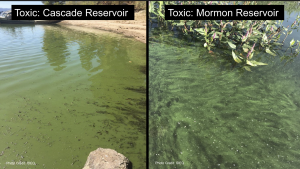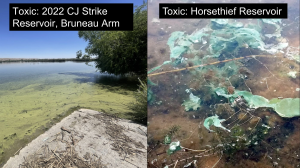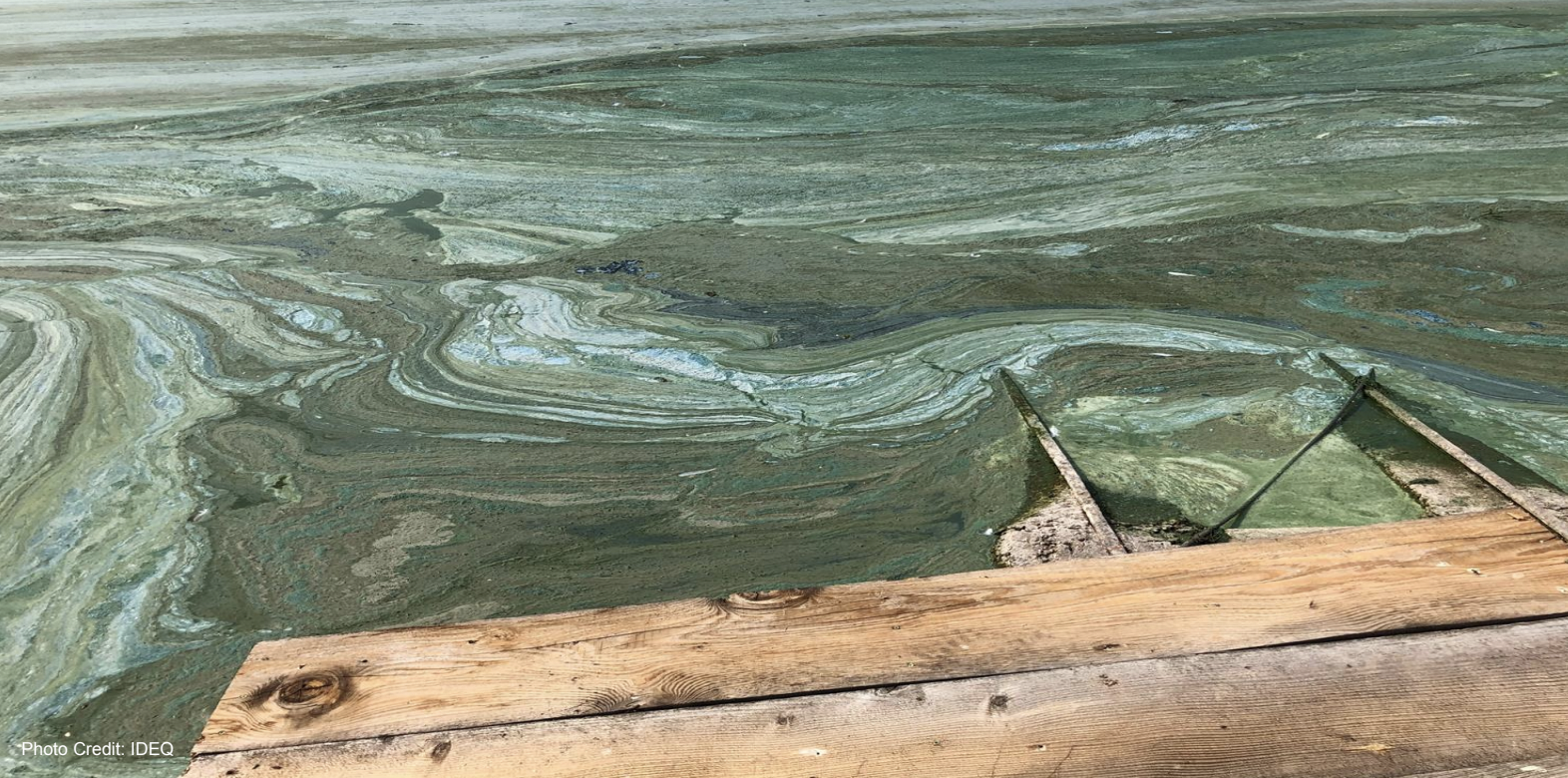Toxic algae season is quickly approaching: What you need to know to stay safe
As temperatures warm during summer, Idahoans flock to the shores of Idaho’s spectacular rivers, lakes, and reservoirs. Whether it’s boating, swimming, fishing, picnicking with family and friends, or just strolling along the banks—Idaho’s abundant waters provide a respite from the heat and a chance to cool our toes. With over 2,000 lakes and 93,000 miles of rivers and streams in the Gem State, Idahoans have a lot of options.Unfortunately, these water bodies are not always safe for recreation due to recurring outbreaks of toxic algae. Just last year, 14 different health advisories were issued for 13 of Idaho's waterbodies, from Hayden and Fernan Lakes in the panhandle all the way to Henry’s Lake in eastern Idaho and Brownlee Reservoir near the Oregon border.In 2022, a horse died after drinking contaminated water, toxic algae is the presumed cause of deaths for two dogs as well. No doubt, these are tragic outcomes—made even more tragic because these deaths are preventable.
What is toxic algae?
Blue-green algae or cyanobacteria naturally occur at background levels in many freshwater ecosystems. But when conditions are right (or wrong…), populations of toxic algae have the potential to explode, producing potentially fatal cyanotoxins that can cause severe illness or death from direct contact, ingestion, and even exposure to wind-borne spray. These outbreaks are also referred to as HABs—harmful algal blooms.Symptoms can include abdominal pain, vomiting, blistering around the mouth, fever, headache, diarrhea, cough, hives, rashes, and respiratory paralysis, and even lead to death. Dogs, cattle, and other livestock can be especially susceptible to toxic algae.
How do these outbreaks occur?
Outbreaks generally occur when there is a combination of high water temperatures and excessive phosphorus and nitrogen, which feed these bacteria. In many cases, it can be difficult to control water temperature, but there are steps that can be taken to reduce the nitrogen and phosphorus pollution that contribute to these outbreaks.The primary sources of this pollution are wastewater systems and treatment plants, runoff from over-fertilized crops and lawns that drain to surface or groundwater, beef and dairy feedlots, fish farms, and other industrial discharges. Disturbed soils from construction sites can also contribute to this pollution.Health Districts and other partners rely upon citizen reports to monitor potential outbreaks. Currently, the Idaho Department of Health and Welfare is responsible for issuing health advisories when IDEQ’s water sampling indicates a toxic algae outbreak.However, neither of these agencies receive any dedicated funding to proactively monitor, manage, or prevent these potentially deadly outbreaks.It is time to call on the Governor's Office, IDEQ, and IDHW to ensure dedicated funding is made available to address this public health hazard and take meaningful steps to monitor for outbreaks, keeping people, dogs, and wildlife safe from the dangers posed by toxic algae. Take action and let Idaho’s leaders know today that it's time to invest in programs to address these potentially deadly outbreaks!

